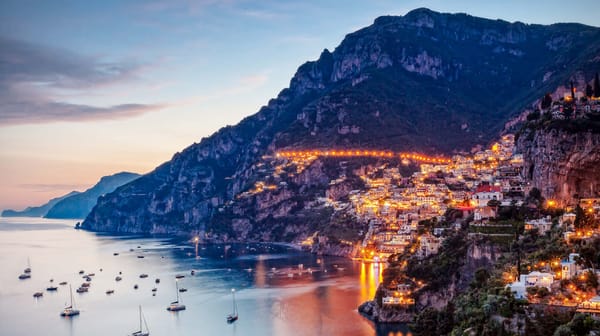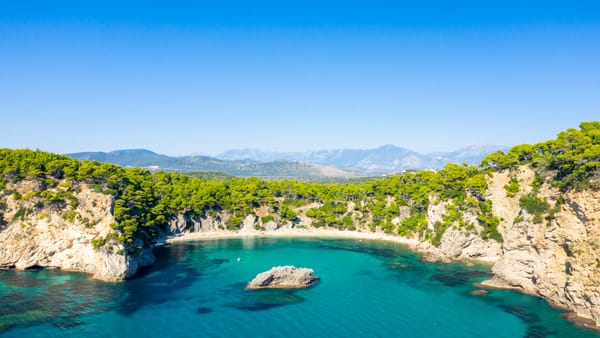Tourism has long been an economic powerhouse, driving growth, creating jobs, and fostering cultural exchange worldwide. However, the unprecedented surge in global travel over the past few decades has also brought significant challenges.
Overtourism, environmental degradation, and the erosion of local cultures and communities have become pressing concerns. In response to these challenges, the concept of "High-Value, Low-Volume" tourism has emerged as a promising alternative, aiming to balance the economic benefits of tourism with the preservation of natural and cultural heritage.
Here, we explore the principles, benefits, and implementation strategies of "High-Value, Low-Volume" tourism, providing a comprehensive overview of this sustainable travel model.
Understanding High-Value, Low-Volume Tourism
"High-Value, Low-Volume" tourism (HVLV) is a paradigm that prioritizes quality over quantity. Instead of attracting large numbers of tourists, this approach aims to draw fewer visitors willing to spend more per trip, thereby maximizing economic benefits while minimizing environmental and social impacts. Several key principles characterize HVLV tourism:
- Sustainability: Ensuring that tourism activities do not harm the environment, local cultures, or communities.
- Exclusivity: Offering unique and high-quality experiences that justify higher spending.
- Community Involvement: Local communities should be engaged in tourism planning and operations to ensure that they benefit directly from tourism revenues.
- Conservation: Supporting the preservation of natural and cultural heritage through tourism revenue.
The Benefits of "High-Value, Low-Volume" Tourism
Economic Advantages
One of the primary advantages of HVLV tourism is its potential to generate substantial economic benefits with fewer visitors. By targeting high-spending tourists, destinations can achieve higher revenue per visitor, which can be channeled into conservation and community development projects. This model also promotes the development of high-end services and products, such as luxury accommodations, gourmet dining, and bespoke experiences, creating opportunities for local entrepreneurs and businesses.
Environmental Sustainability
HVLV tourism inherently reduces its environmental footprint by limiting the number of visitors. Fewer tourists mean less strain on natural resources, reduced waste and pollution, and less impact on wildlife and ecosystems. This approach encourages the development of eco-friendly infrastructure and practices, such as green buildings, renewable energy, and sustainable waste management.
Cultural Preservation
"High-Value, Low-Volume" tourism can help preserve and promote local cultures and traditions. By emphasizing authentic and immersive experiences, this model encourages tourists to engage with local customs, arts, and heritage, fostering respect and appreciation for cultural diversity. Moreover, the revenue generated from HVLV tourism can be invested in cultural preservation projects, such as restoring historic sites, supporting traditional crafts, and organizing cultural festivals.
Enhanced Visitor Experience
With fewer tourists, HVLV destinations can offer a more personalized and enjoyable experience. Visitors can explore attractions without the crowds, enjoy higher-quality services, and have meaningful interactions with locals. This enhanced experience often leads to higher satisfaction and positive word-of-mouth, attracting high-value tourists in the long run.

Positano XVIII © Nicholas V. K.
Vibrant abstract art of a couple in love, embracing on a journey to Positano by the sea.
Implementing High-Value, Low-Volume Tourism
Strategic Planning and Policy Development
Implementing HVLV tourism requires strategic planning and policy development at the national and local levels. Governments and tourism authorities must establish clear goals and regulations to guide development. This includes limiting visitor numbers, defining high-value tourism products, and ensuring that tourism revenues are invested in conservation and community development.
Infrastructure and Service Development
To attract high-value tourists, destinations must offer high-quality infrastructure and services. This includes luxury accommodations, gourmet dining, bespoke experiences, and efficient transportation. Investing in eco-friendly infrastructure, such as renewable energy, green buildings, and sustainable waste management systems, is also crucial for minimizing environmental impacts.
Marketing and Branding
Effective marketing and branding are essential for positioning a destination as a high-value, low-volume tourism hub. This involves highlighting unique and exclusive experiences, promoting sustainability initiatives, and targeting affluent and environmentally conscious travelers. Collaborations with luxury travel agencies, influencers, and media can help reach the desired audience.
Community Involvement and Benefits
Engaging local communities in tourism planning and operations is critical for the success of HVLV tourism. Community involvement ensures that tourism development aligns with local needs and values and that residents directly benefit from tourism revenues. This can be achieved through capacity-building programs, community-owned tourism enterprises, and fair revenue-sharing mechanisms.
Conservation Initiatives
HVLV tourism should actively support conservation initiatives. This can include funding for protected areas, wildlife conservation programs, and cultural preservation projects. Tour operators and accommodations can also adopt sustainable practices, such as minimizing waste, reducing energy consumption, and supporting local conservation efforts.
Positano! Remmese Reastaurant at Le Agavi Hotel! © Nicholas V. K.
Challenges and Considerations
While high-value, low-volume tourism offers numerous benefits, it also presents several challenges and considerations:
Balancing Access and Exclusivity
One of the primary challenges of HVLV tourism is finding the right balance between access and exclusivity. While limiting visitor numbers can help preserve the environment and enhance visitor experiences, it can also create perceptions of elitism and restrict access for budget travelers. Striking a balance that maintains exclusivity without excluding a significant portion of potential visitors is crucial.
Ensuring Community Benefits
Ensuring that local communities benefit from HVLV tourism can be challenging, particularly in destinations with limited capacity for high-end tourism development. Effective community involvement and fair revenue-sharing mechanisms are essential to prevent economic disparities and ensure that tourism contributes to local well-being.
Managing Visitor Expectations
High-value tourists often have high expectations regarding quality and service. Meeting these expectations requires continuous investment in infrastructure, staff training, and service standards. Destinations must also be prepared to handle any negative feedback and adapt to changing market demands.
Monitoring and Evaluation
Effective monitoring and evaluation are crucial for assessing the impact of HVLV tourism and making necessary adjustments. This involves tracking visitor numbers, spending patterns, environmental impacts, and community benefits. Regular assessments can help identify areas for improvement and ensure that tourism development aligns with sustainability goals.

The Future of "High-Value, Low-Volume" Tourism
The future of "High-Value, Low-Volume" tourism looks promising, particularly in the context of growing awareness about mass tourism's environmental and social impacts. As travelers become more conscious of their environmental footprint and seek authentic experiences, the demand for HVLV tourism will likely increase. Destinations that adopt this model can position themselves as leaders in sustainable tourism, attracting high-value tourists willing to pay a premium for unique and responsible travel experiences.
Technology and Innovation
Advances in technology and innovation can further support the development of HVLV tourism. Digital platforms can facilitate personalized travel planning, allowing tourists to customize their experiences according to their preferences and interests. Innovative technologies can also enhance sustainability, such as using data analytics to optimize resource use, implementing contactless payment systems, and promoting virtual tourism experiences.
Global Collaboration
Global collaboration and knowledge-sharing are essential for the success of HVLV tourism. Destinations can learn from each other's experiences, share best practices, and collaborate on conservation initiatives. International organizations, such as the United Nations World Tourism Organization (UNWTO), can be key in promoting HVLV tourism and supporting destinations in their sustainability efforts.
Policy Support
Supportive policies and regulations are crucial for the long-term success of HVLV tourism. Governments and tourism authorities must create an enabling environment for high-value tourism development, including providing incentives for sustainable practices, investing in infrastructure, and ensuring that tourism revenues are fairly distributed. International agreements and frameworks can also support the global adoption of HVLV tourism principles.

In Summation
"High-Value, Low-Volume" tourism represents a sustainable and responsible approach to travel, offering numerous benefits for destinations, tourists, and local communities.
This model can generate substantial economic benefits by prioritizing quality over quantity while minimizing environmental and social impacts. Implementing HVLV tourism requires strategic planning, community involvement, effective marketing, and continuous monitoring and evaluation.
While challenges exist, the growing demand for sustainable and authentic travel experiences provides a promising future for HVLV tourism. Destinations that embrace this model can lead the way in sustainable tourism, ensuring that travel remains a force for good in the world.






